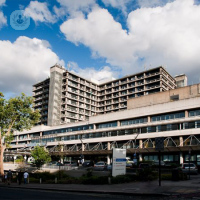Vaginal cysts
What are vaginal cysts?
A vaginal cyst is a benign sac-like growth filled with air, fluid or pus that develops in the vaginal wall. Most develop on or under the lining of the vagina. Some vaginal cysts are so small that they can’t be seen by the naked eye. Others can grow much larger to the size of an orange.

There are different types of vaginal cysts:
- Vaginal inclusion cysts - the most common type of vaginal cysts that often develop during or after childbirth. They are usually caused by an injury to the wall of the vagina.
- Gartner’s duct cysts - they develop when the ducts in a developing embryo don't disappear as they should after your baby is born. The ducts then form vaginal cysts later in life.
- Bartholin’s cysts - if a flap of vaginal skin grows over the Bartholin’s gland, which is located on the labia, fluid can build up in the gland and a cyst can form.
What are the symptoms of vaginal cysts?
Vaginal cysts usually have no symptoms. However, you might notice a small lump pushing out or bulging from the vaginal wall or on the labia (vaginal lips). You may also experience pain during sex or while inserting a tampon.
How are vaginal cysts diagnosed?
Vaginal cysts are normally picked up during routine pelvic exams carried out by your gynaecologist. If they notice a mass on your vaginal wall, they may carry out further tests to exclude other conditions. These tests could include:
- MRI scan
- CT scan
- Ultrasound
- Biopsy of tissue taken from the cyst to rule out vaginal cancer
- Other vaginal tests to look for STIs
What are the treatments for vaginal cysts?
If a vaginal cyst is detected by your doctor, the first step in treating it is to monitor it for any growth or changes in appearance.
If your cyst is particularly large and filled with fluid, your doctor may need to drain it by inserting a small tube known as a catheter to open the cyst and allow it to drain properly and heal quicker. This catheter may need to be in place for several weeks.
If the cyst gets infected and an abscess forms, you will be prescribed antibiotics to fight the infection.
If it grows larger and starts causing more severe symptoms, you may need to undergo surgery to remove the cyst.
What are the complications of vaginal cysts?
Vaginal cysts usually don’t cause any problems, however, if they grow larger, it can lead to increased pain and discomfort. There is also a risk of the cyst becoming infected.
What is the long-term outlook for vaginal cysts?
As vaginal cysts are usually benign and most don’t grow very large, the outlook is very good. If you need to undergo surgery to remove the cyst, the chances of vaginal cysts returning again are very low.








